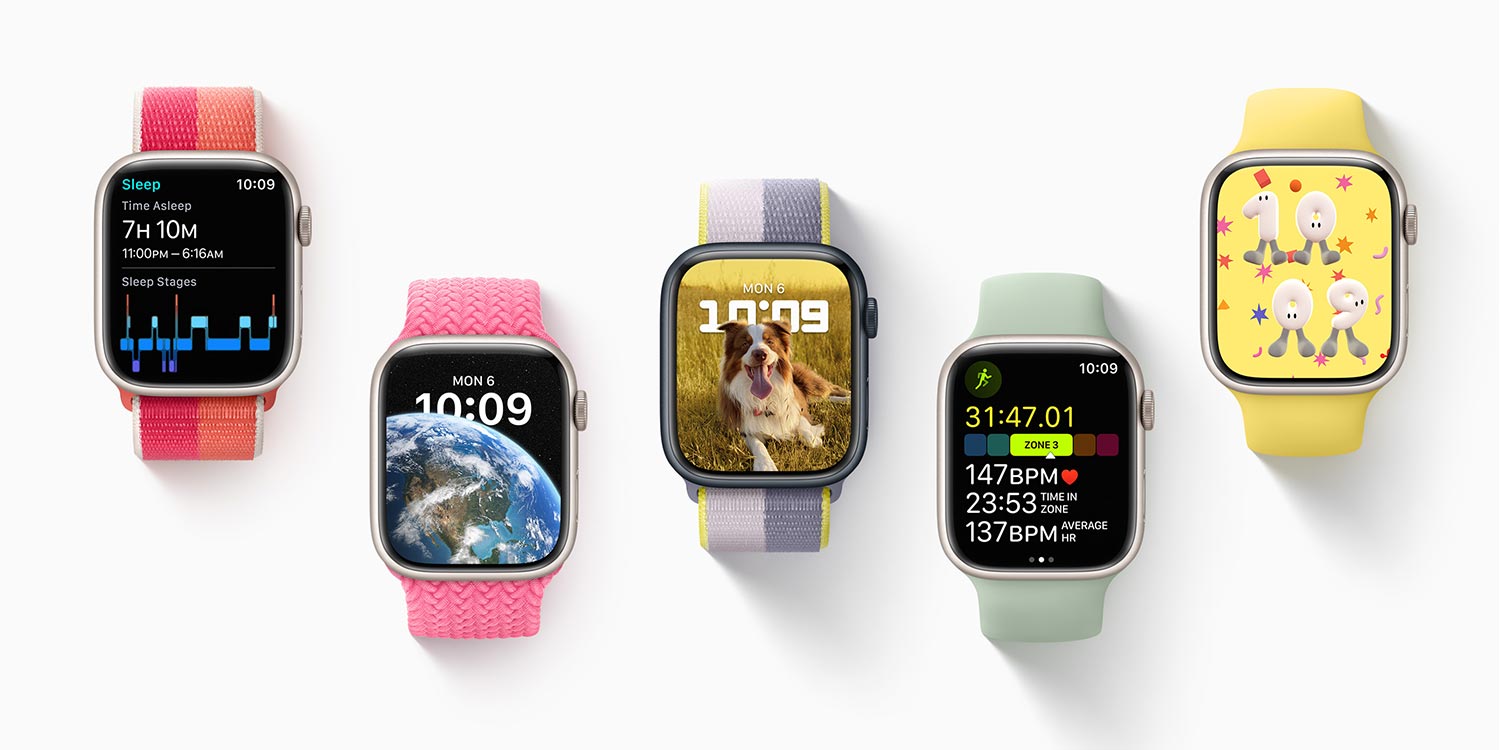The big announcements from Apple’s WWDC22 keynote covered iOS 16, iPadOS 16, and two new M2-powered MacBooks. But there’s plenty coming to Apple Watch this year too, with watchOS 9 focusing even more on its health and activity tracking capabilities.
Let’s take a look and 7 of the biggest changes coming to Apple Watch.
Watch Faces
It’s no surprise to see a fresh set of watch faces added each year, but that doesn’t make them any less welcome. This year there are four brand new faces to check out alongside upgrades for some of the old ones. To tie in with the reimagined Lock Screen in iOS 16, you can overlay portrait photos onto the time with a cool depth effect, and you can set specific watch faces to appear when you turn on a specific Focus.
Workout
Exercise tracking is one of Apple Watch’s best use cases, and its popular Workout app now provides richer metrics and adds some new training experiences. You can spin the Digital Crown mid-session to switch between views, so you can keep up with different training styles. Custom workouts allow for interval training, while Heart Rate Zones can monitor your workout intensity. Plus, there’s a new mode for triathletes – or anyone who combines several types of exercise into a single session.
Running
Similarly, Apple has improved its tracking features for runners. You can now track metrics like Stride Length, Ground Contact Time, and Vertical Oscillation, while some smart pacing features allow you to check you’re on time during a run and compare with previous bests.
Fitness+
Apple’s paid fitness program, available as a standalone subscription or part of an Apple One bundle, sees a few changes this year too. You now get on-screen guidance with most workout types, and those without an Apple TV can instead connect to compatible third-party screens instead.
Sleep
Same story here: Apple takes an existing feature and adds new metrics. Now, in addition to Wind Down and Bedtime modes, Apple Watch offers full-on sleep tracking that can supposedly tell whether you’re in REM, Core, or Deep sleep.
AFib History
This is a huge step in Apple’s quest to make healthcare better with technology. Atrial fibrillation (AFib) is a common cause of strokes, but historically it’s been very difficult to track. With the ECG capabilities of Apple Watch, AFib sufferers can now dial into a detailed breakdown of their heart rhythms and even share the collected data with their doctor.
Medications
This is a whole new app that works across both Apple Watch and iPhone, designed to help users manage their medications, vitamins, supplements, you name it. There are lists, schedules, and reminders, plus notifications if the app detects “potential critical interactions” with your meds.




